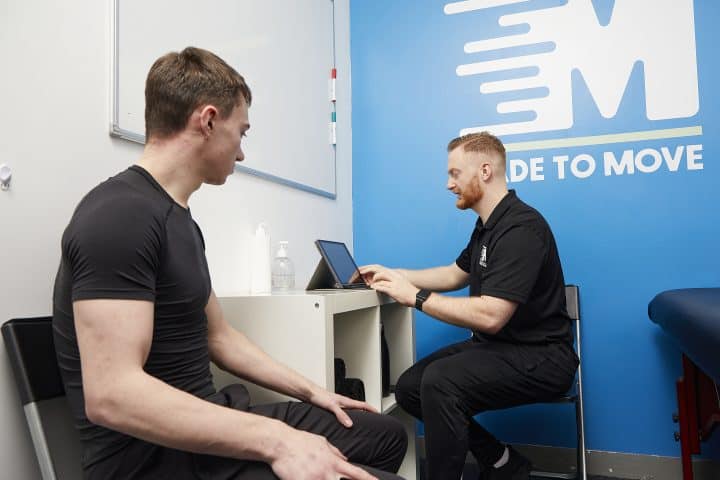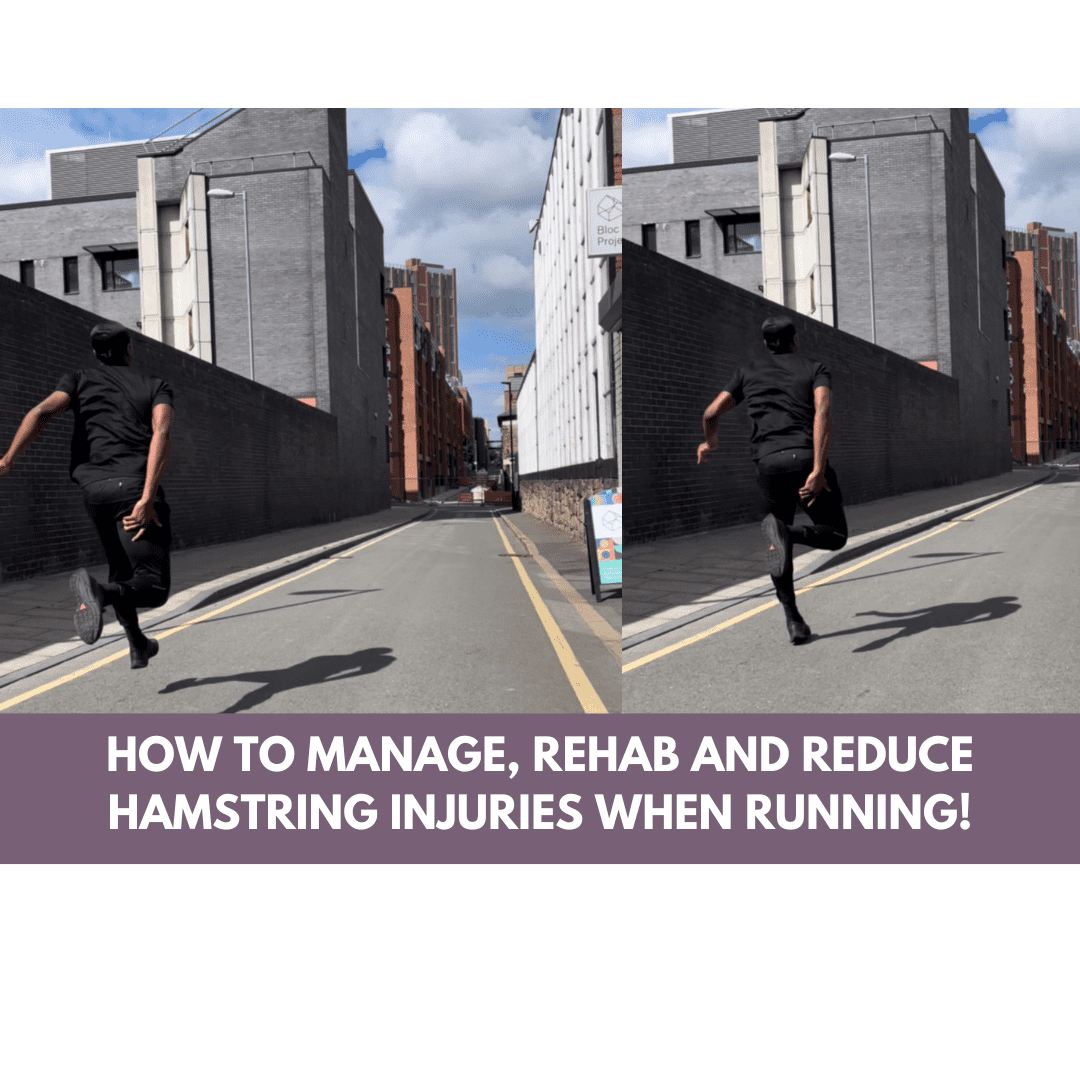Introduction
Strains of the hamstring muscle are one of the most common injuries in many sports, including soccer, basketball, and track and field. Hamstring strains are painful and can be very frustrating, especially if they happen while playing sports or performing activities at work. If you have suffered a hamstring strain before or if you want to avoid getting injured in the future, read on for some tips that may help limit future injuries.

What causes hamstring strains.
There are several things that can cause hamstring strains such as Muscular imbalances, weak hamstrings, lack of mobility and lack of flexibility. The hamstring muscle group is used during many common activities, such as walking, running, and jumping. There are several things you can do to limit the likelihood of hamstring strains in the comfort of your own home or even in the gym.
Anatomy of the hamstrings
The hamstrings are a group of three muscles running along the backs of the thighs. The “hamstring” is comprised of a group of three muscles: Bicep Femoris, Semitendinosus and the semimembranosus. These muscles are located on the back of the femur (commonly known as the thigh). The bicep femoris begins at the ischial tuberosity and is inserted into the head of the fibula. The other two muscles (semitendinosus and semimembranosus) also attach to the fibula. Although, the origin points are slightly different being the spine and pelvis.

Symptoms of a hamstring strain.
When experiencing a hamstring strain, you are likely to experience some of the following symptoms:
- Initially will most likely feel a sharp sudden pain in the affected area.
- You may experience a feeling of an elastic band popping.
- The hamstring muscles that are affected will feel tender upon touch.
- Once the first few hours have passed you may notice that the area has become swollen and tender.
- Bruising will also be visible in the affected area depending on the severity
- You may experience a partial or complete loss of strength.
- You may lose the ability to complete daily tasks and functions.
Who do hamstring strains usually affect?
Hamstring injuries are common in sports like Track and Field, Football, Rugby, and American Football. They often occur in sports that involve explosive actions like sharp turning, fast and sudden changes of speed or sprinting at max velocity. This being said, it’s not only athletes who can experience hamstring injuries, but that can also arise when doing simple day to day actions like walking at a faster pace or climbing over a large object or hill.
What to do if you think you have a hamstring strain?
If you are exercising and experience any of the symptoms listed above. The first thing you should do is stop and seek some form of assessment and treatment. The sooner you act the less likely you are to be limited by the effects further down the line.
When to get help with your hamstring strain
If you experience any of the symptoms it would be advised to go and seek a professional opinion on the matter as soon as possible. Here you will be assessed correctly to find out how severe your injury is. From here they will be able to prescribe you a variety of exercises to help you progress from your current situation. To diagnose the injury, they will complete a series of movements for the hamstrings, ask a variety of questions to get a deeper understanding of the situation and apply hands-on assessment to the hamstrings to pinpoint exactly where the strain is.

How long will it take for my hamstring strain or tear take to get better?
The recovery time for a full hamstring strain will often take about three months to be 100% fit again. However, Recovery times vary depending on the severity of the injury, but it is normal for that recovery period to last between one and six months. If your injury is severe, then you may need more time to heal fully. Although, if your injury is mild, then your timeline for recovery will be much shorter.
Timeline for recovery for hamstring strains
After the hamstring strain has occurred, to get the muscle back to full strength it would help to follow this rough guideline.
Week 1
After the first week, it is important to implement things such as foam rolling and sports massage this will help reduce the tension of the muscle fibres. Isometric strengthening exercises should also be implemented into your program with the intention to improve the strength in the area whilst limiting changes in muscular length.
Week 2
In the second week, you can slowly start to progress the exercises and start completing eccentric movements (lengthening under tension). This can be done doing things such as body weight slide outs, assisted Nordic curls or even lightweight Romanian Dead Lifts (RDL).
Week 3
For the third week, you should start to see an increase in function and should be able to complete concentric contractions these can be done via a machine such as hamstring curls.
Week 4
After these are completed and normal functions have returned you can start to complete things such as plyometrics to prepare you for the return to play and slowly start to reintroduce running again. This is often done with bands, jumps, hopping and bounding.
How to treat hamstring strains.
Flexibility and mobility
Your therapist will most likely prescribe stretching exercises for you to do during later stages of recovery. It is important to work on your flexibility and mobility to lower the risk of re-injury. Stretching, mobility and massage can help improve range of motion and improve the flexibility of the muscles around the injured area.
It’s easy to want to push yourself too far if you’re feeling impatient with healing time. Work up gradually towards full range of motion. You’ll know if you’re moving too fast because you may experience slight discomfort; if this happens, ease off until it fades away before continuing again. Avoid any activity that may strain the hamstring further (such as running) until all symptoms have completely subsided.
Isometric rehab
In isometric exercises, you contract a muscle without any movement. This type of training builds strength in your hamstring and can be an effective way to get strength back after an injury. Isometric exercises are a common form of rehabilitation for injuries because they improve muscular strength and help rebuild flexibility, which can help reduce future strains or tears from occurring again.
Concentric rehab
A concentric contraction is when the muscle fibres contract and shorten simultaneously. As your muscle shortens, it generates enough force to move an object. These exercises often create the most amount of force and are a necessary part of full rehabilitation of the hamstrings.
Eccentric rehab
Eccentric contractions occur when the total length of the muscle increases as tension is produced. For example, the lowering phase of a hamstring curl or Nordic curl forms an eccentric contraction. Muscles are capable of holding greater forces under eccentric conditions than under either isometric or concentric contractions due to the muscle fibre arrangement.
Functional strength rehab
Functional strength training during end-stage rehabilitation is essential for developing sport-specific skills. Using alternative regressions or progressions to exercises such as Romanian deadlifts as seen below is a great way for developing end range strength and stability.
When can I start running or playing sport again after a hamstring tear or strain?
After experiencing hamstring strains athletes often return to sport too soon. This puts them at risk of reinjuring the area again to a similar or maybe even worse. When it comes to rehabilitation for a hamstring strain, it is important to be wary of pushing yourself too far too soon. it doesn’t mean sitting on the sideline for six months but slowly increasing the intensity week by week, completing low impact activities like cycling and swimming.
How can I prevent hamstring tears or strains?
It first must be noted that you cannot prevent hamstrings. However, you can reduce the risk of future injuries. The best way to reduce hamstring strains is by taking care of your body with adequate rest in between sessions and proper exercise to strengthen the area. This will often include a program or schedule to follow. For example, novice runners or sports participants may require 24-48 hours of recovery between training sessions to allow the body to recover optimally. Furthermore, training the hamstrings groups 1-2 times a week will ensure appropriate strengthening to the area and will meet the demands of your sport or activity.
Conclusion
By now, you know where your hamstrings are and how they work, what can cause them to become injured, and how to reduce the likelihood of them from becoming injured. So now it’s time for you to get out there and start using these tips! Remember: You should always warm-up before your workout; take care and manage your training when training on a tired body; go easy on yourself when you’re just starting out; stretch after every workout session (this will keep the muscles long, strong, and healthy); get plenty of sleep so that your body has time to recuperate from its workouts.

